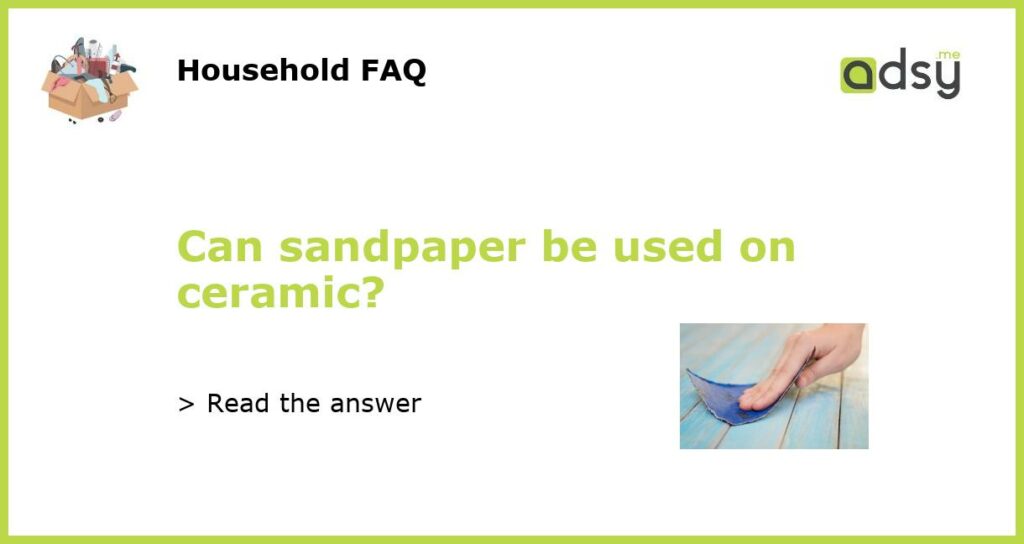Yes, sandpaper can be used on ceramic
Sandpaper is a versatile tool that can be used on a variety of surfaces, including ceramic. However, it is important to use the correct type of sandpaper to avoid damaging the ceramic surface. In this article, we will explore the different types of sandpaper available for ceramic surfaces and provide tips on how to use sandpaper effectively.
Choosing the right sandpaper
When working with ceramic, it is essential to select the appropriate sandpaper grit for the task at hand. The grit refers to the size of the abrasive particles on the sandpaper. For smoothing and shaping ceramic surfaces, it is recommended to start with a coarser grit and gradually work your way up to finer grits for a smoother finish.
For removing rough edges or scratches on ceramic, a medium to coarse grit sandpaper, such as 80 or 120 grit, can be used. This coarser grit will help remove material more quickly. If a smoother surface is desired, switching to a finer grit, such as 240 or 320, will help achieve a polished finish.
It is important to note that using too coarse of a grit can cause deep scratches or damage to the ceramic surface, so it is recommended to start with a lower grit and adjust as needed.
Using sandpaper on ceramic
Before you begin sanding your ceramic surface, make sure to clean it thoroughly to remove any dirt or debris. This will ensure a smoother sanding experience and prevent the sandpaper from becoming clogged.
When sanding, it is important to apply even pressure and use long, smooth strokes. Avoid applying too much pressure, as this can cause the sandpaper to wear out quickly or damage the ceramic surface.
It may be helpful to wet the ceramic surface with water or use a sanding fluid to lubricate the sandpaper and prevent it from overheating. This can also help extend the life of your sandpaper.
After sanding, inspect the ceramic surface to ensure that the desired level of smoothness has been achieved. If necessary, repeat the sanding process with a finer grit sandpaper to achieve a smoother finish.
Alternative methods for smoothing ceramic surfaces
In addition to using sandpaper, there are alternative methods for smoothing ceramic surfaces. One popular method is to use diamond sanding pads or discs. These abrasive pads are specifically designed for working with hard materials like ceramic and provide a more precise and controlled sanding experience.
Another option is to use a ceramic polishing compound. These compounds are formulated to be used with a buffing wheel or pad and can help bring out the natural shine of ceramic surfaces.
Yes, sandpaper can be used on ceramic surfaces, but it is important to use the correct type of sandpaper and apply the right amount of pressure. Starting with a coarser grit and gradually working your way up to finer grits will help achieve the desired level of smoothness. It is also worth considering alternative methods such as diamond sanding pads or ceramic polishing compounds for a more controlled and effective sanding experience.






